Electromagnetic waves, electromagnetic radiation, propagation of electromagnetic waves
In 1864, James Clerk Maxwell predicted the possibility of electromagnetic waves in space. He made this claim on the basis of the conclusions derived from the analysis of all the experimental data known at that time concerning electricity and magnetism.

Maxwell mathematically combined the laws of electrodynamics, connecting electric and magnetic phenomena, and thus came to the conclusion that electric and magnetic fields, which change with time, generate each other.
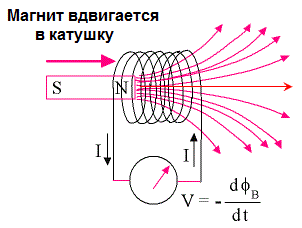
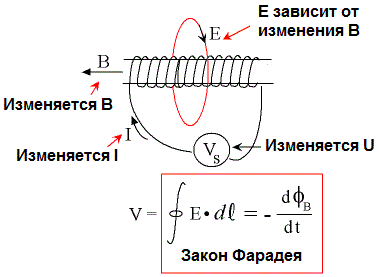
Initially, he emphasized the fact that the relationship between magnetic and electric phenomena is not symmetrical and introduced the term "eddy electric field", offering his own, truly new explanation of the phenomenon of electromagnetic induction discovered by Faraday: "every change in the magnetic field leads to the appearance in the surrounding space of a vortex electric field with closed lines of force”.
According to Maxwell, the opposite statement that "a changing electric field produces a magnetic field in the surrounding space" is also true, but this statement initially remained only a hypothesis.
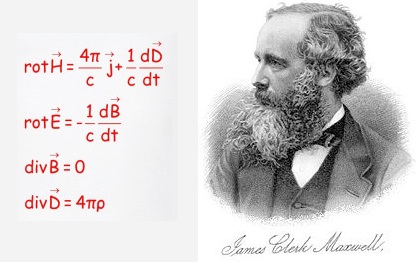
Maxwell wrote down a system of mathematical equations that consistently describe the laws of mutual transformations of the magnetic and electric fields, these equations later became the basic equations of electrodynamics and began to be called "Maxwell's equations" in honor of the great scientist. who wrote them down. Maxwell's hypothesis, based on the written equations, has several conclusions that are extremely important for science and technology, which are presented below.
Electromagnetic waves exist
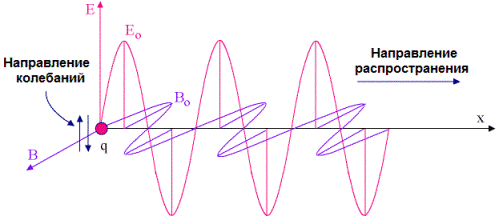
Transverse electromagnetic waves can exist in space that propagate over time electromagnetic field… The fact that the waves are transverse is shown by the fact that the vectors of the magnetic induction B and the electric field strength E are mutually perpendicular and both lie in the plane perpendicular to the direction of propagation of the electromagnetic wave.
Electromagnetic waves propagate at a finite speed

The speed of propagation of electromagnetic waves in a given substance is finite and is determined by the electrical and magnetic properties of the substance through which the wave propagates. The length of the sinusoidal wave λ in this case is related to the speed υ with a certain exact ratio λ = υ / f and depends on the frequency f of the field oscillations. The speed c of an electromagnetic wave in a vacuum is one of the basic physical constants — the speed of light in a vacuum.
Because Maxwell stated that the speed of propagation of an electromagnetic wave was finite, this created a contradiction between his hypothesis and the theory of action at long distances accepted at the time, according to which the speed of propagation of waves was supposed to be infinite. Therefore, Maxwell's theory is called the theory of short-range action.
An electromagnetic wave is an electric and magnetic field that mutually transform into each other.

In the electromagnetic wave, the transformation of the electric field and the magnetic field into each other occurs at the same time, therefore the volume densities of the magnetic and electric energy are equal to each other. Therefore, it is true that the moduli of the electric field strength and the magnetic field induction are related to each other is at any point in space through the following connection:

Electromagnetic waves carry energy

An electromagnetic wave in the process of its propagation creates a flow of electromagnetic energy, and if we take into account the area in the plane perpendicular to the direction of propagation of the wave, then a certain amount of electromagnetic energy will move through it in a short time. Electromagnetic energy flux density is the amount of energy carried by an electromagnetic wave across a surface per unit area per unit time. By substituting the values of the velocity, as well as the magnetic and electric energy, it is possible to obtain an expression for the flux density in terms of the quantities E and B.
Poynting vector — vector of the energy flow of the wave
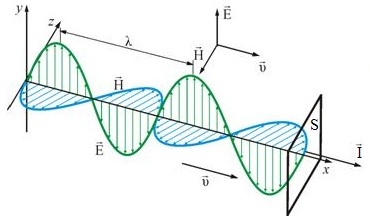

Since the direction of propagation of the wave energy coincides with the direction of the velocity of propagation of the wave, the energy flow propagating in the electromagnetic wave can be set using a vector directed in the same way as the velocity of propagation of the wave. This vector is called the «Poynting vector» — in honor of the British physicist Henry Poynting, who in 1884 developed the theory of the propagation of the energy flow of an electromagnetic field. Wave energy flux density is measured in W/m2.
Electromagnetic waves press against bodies that reflect or absorb them
When an electric field acts on a substance, small currents appear in it, which are the ordered movement of electrically charged particles. These currents in the magnetic field of an electromagnetic wave are subjected to the action of the Ampere force, which is directed deep into the substance. As a result, Ampere's force generates pressure.
This phenomenon was later, in 1900, investigated and confirmed empirically by the Russian physicist Pyotr Nikolayevich Lebedev, whose experimental work was very important in confirming Maxwell's theory of electromagnetism and its acceptance and approval in the future.
The fact that the electromagnetic wave exerts pressure makes it possible to estimate the presence of a mechanical impulse in the electromagnetic field, which can be expressed per unit volume by the volumetric density of electromagnetic energy and the speed of propagation of the wave in a vacuum:

Since momentum is related to the movement of mass, it is possible to introduce such a concept as electromagnetic mass, and then for a unit volume this ratio (in accordance with STR) will assume the character of a universal law of nature and will be valid for any material bodies regardless of the form of matter. Then the electromagnetic field is similar to a material body — it has energy W, mass m, momentum p, and terminal velocity v. That is, the electromagnetic field is one of the forms of matter actually existing in nature.
Final confirmation of Maxwell's theory
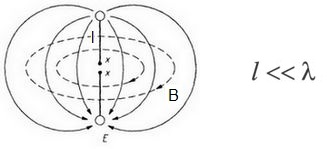
For the first time in 1888, Heinrich Hertz experimentally confirmed Maxwell's electromagnetic theory. He empirically proved the reality of electromagnetic waves and studied their properties such as refraction and absorption in various media, as well as the reflection of waves from metal surfaces.
Hertz measures wavelength electromagnetic radiation, and showed that the speed of propagation of an electromagnetic wave is equal to the speed of light. Hertz's experimental work was the final step toward acceptance of Maxwell's electromagnetic theory. Seven years later, in 1895, Russian physicist Alexander Stepanovich Popov used electromagnetic waves to create wireless communication.
Electromagnetic waves are excited only by accelerated moving charges
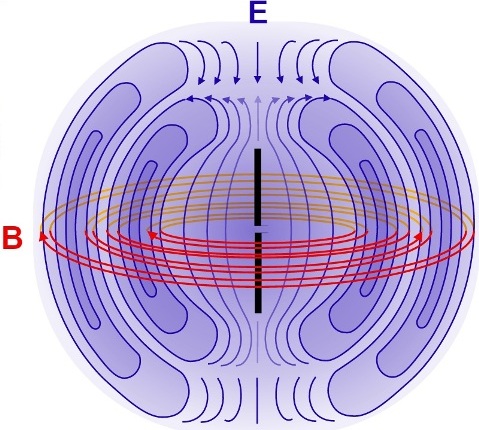
In direct current circuits, the charges move at a constant speed and the electromagnetic waves in this case are not emitted into space. In order for there to be radiation, it is necessary to use an antenna in which the alternating currents, that is, currents that quickly change their direction, would got excited.
In its simplest form, an electric dipole of small size is suitable for radiating electromagnetic waves where the dipole moment would change rapidly with time. Such a dipole is today called a "Hertzian dipole", the size of which is several times smaller than the wavelength it emits.
When emitted from a Hertzian dipole, the maximum flux of electromagnetic energy falls on a plane perpendicular to the axis of the dipole. There is no radiation of electromagnetic energy along the axis of the dipole. In Hertz's most important experiments, elementary dipoles were used to both emit and receive electromagnetic waves, proving the existence of electromagnetic waves.
